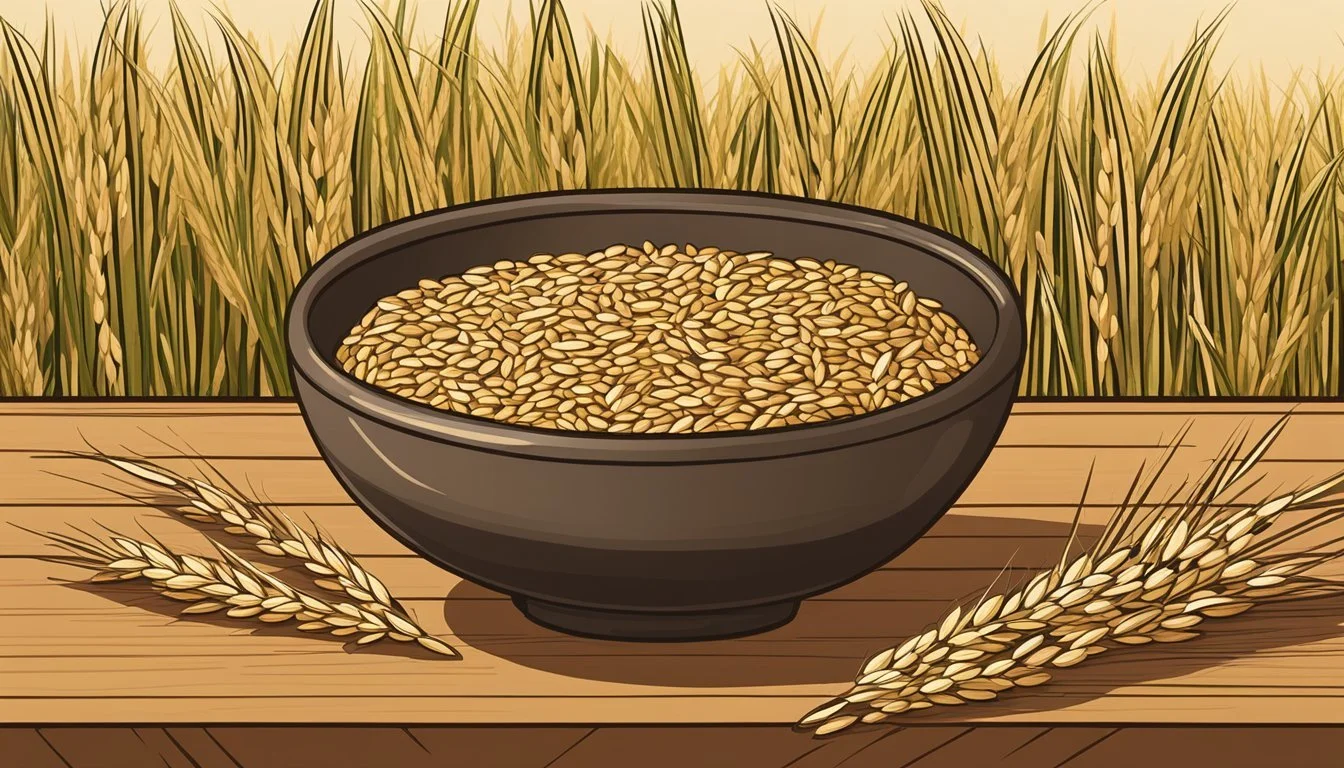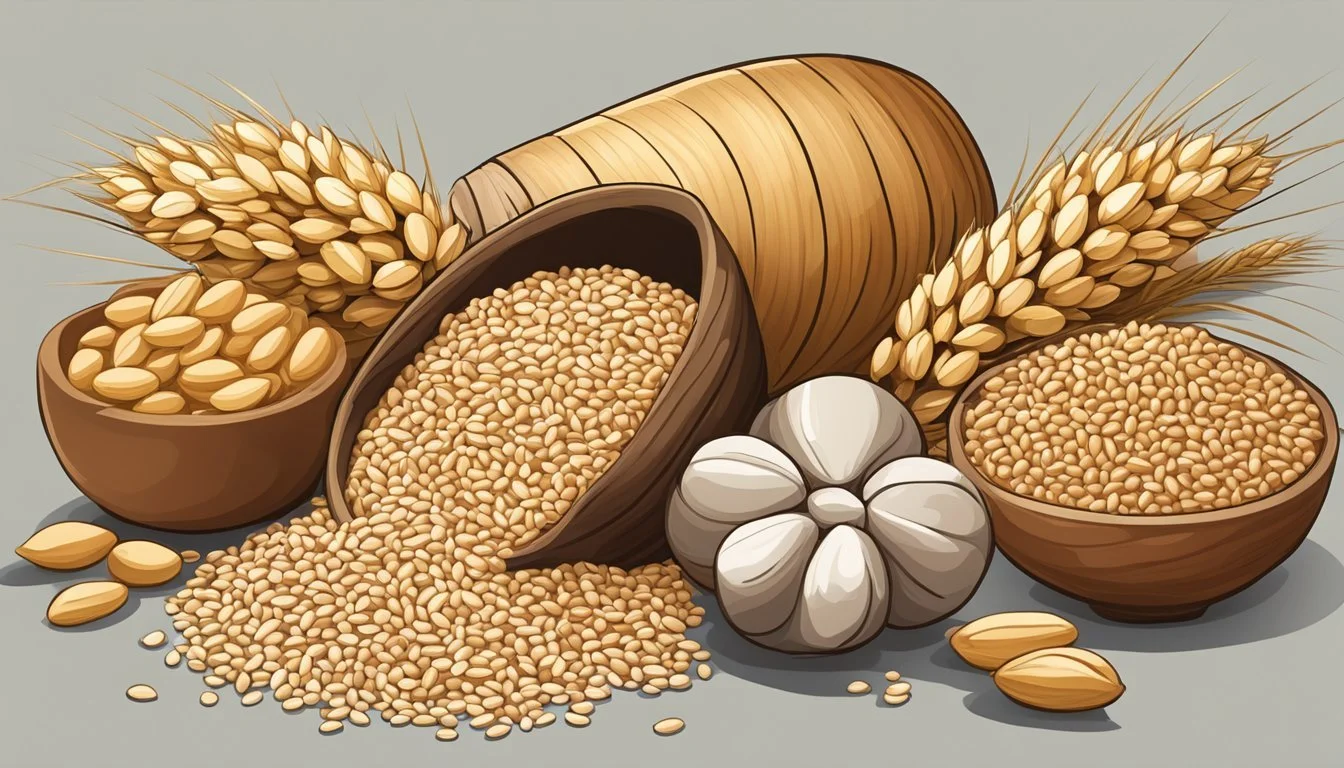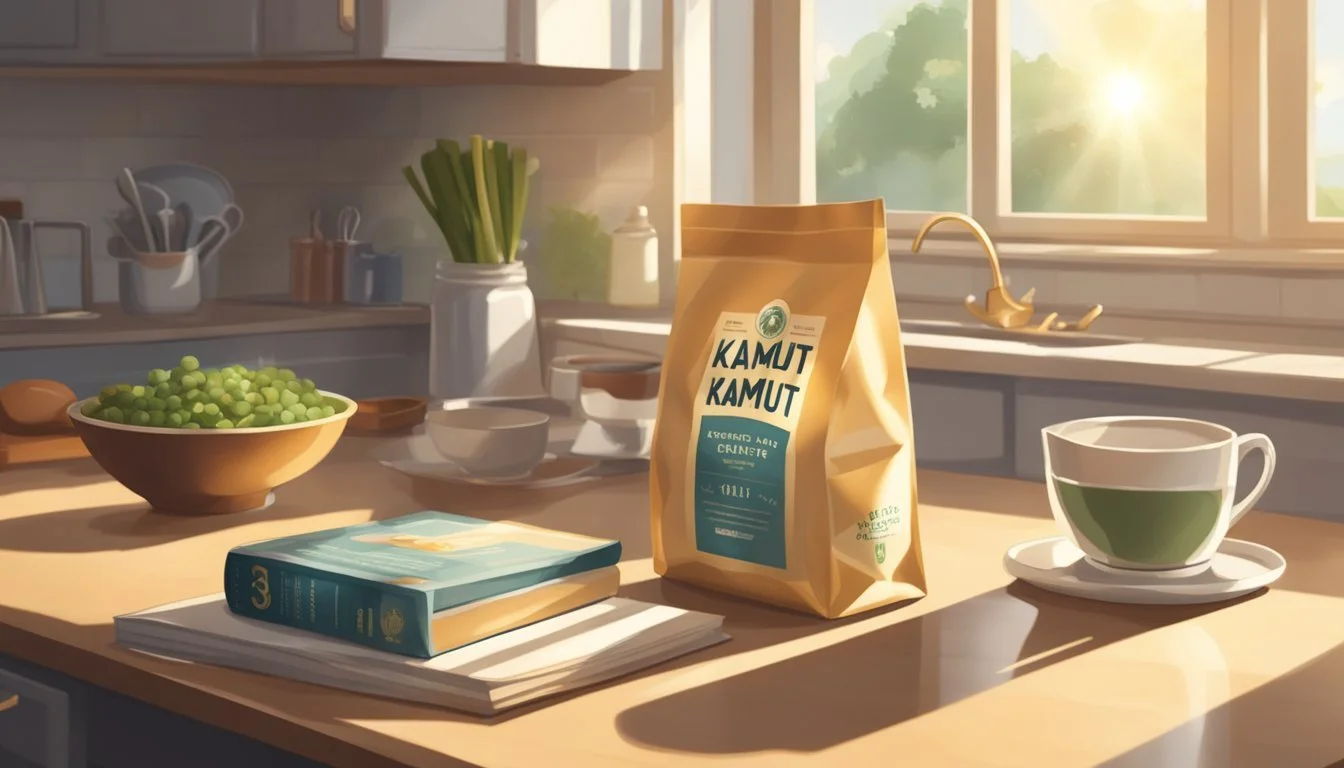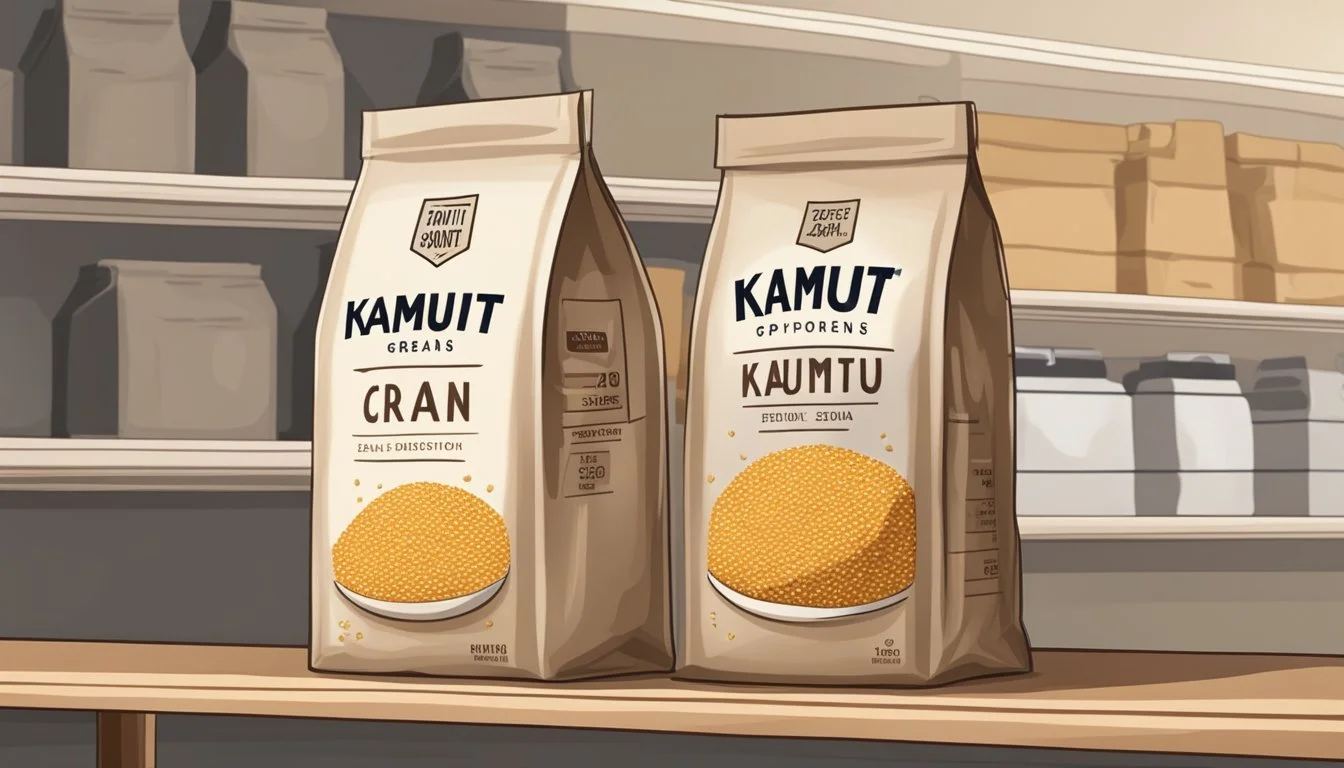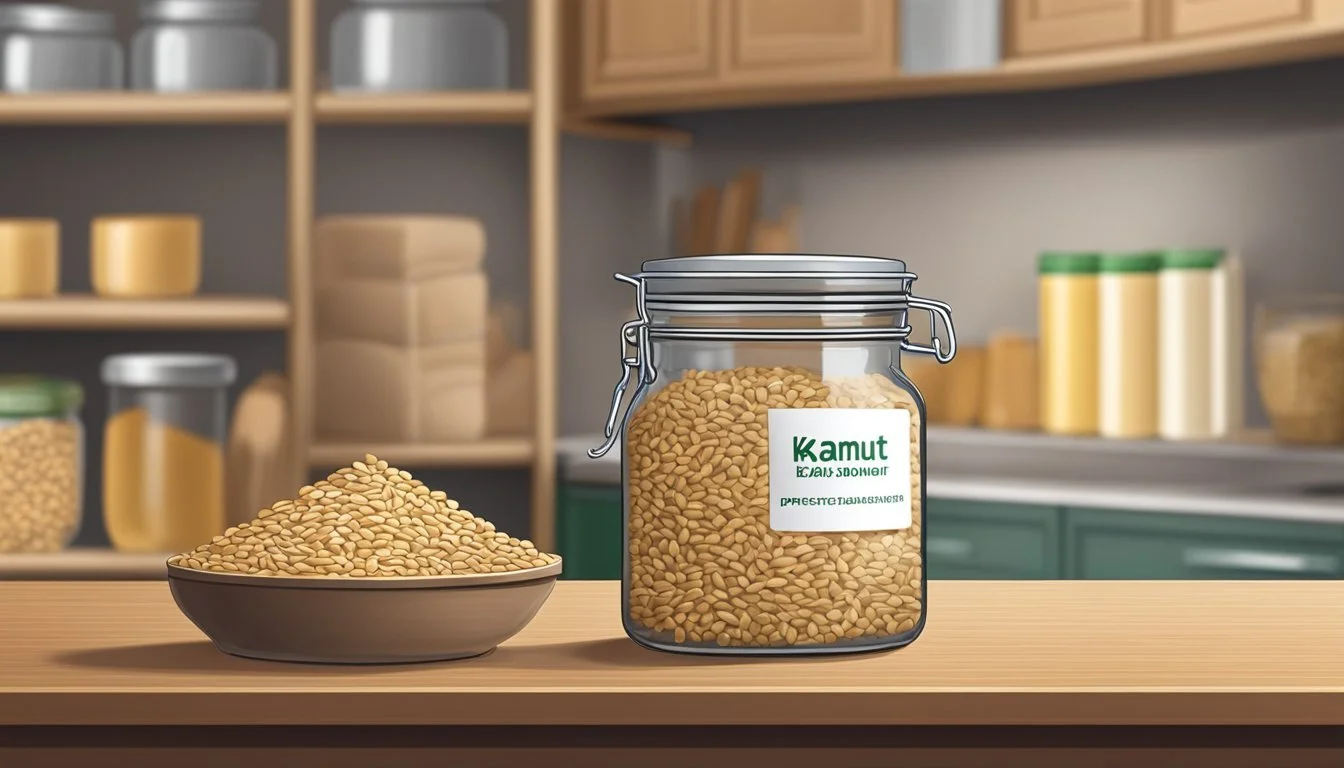How Long Does Kamut Last?
Uncovering the Shelf Life of This Ancient Grain
Kamut (how long does kamut last?), known scientifically as khorasan wheat, has long been treasured for its nutritional value and rich history. Originating from ancient Egypt, this grain is a relative of modern wheat and is praised for its high protein content and sweet, buttery flavor. With consumers increasingly seeking whole foods, understanding the shelf life of kamut is crucial. It can serve as a robust, nourishing staple in the pantry when stored properly.
Unmilled kamut berries boast an impressive shelf life, potentially lasting for 30 years or more under optimal conditions. The longevity of kamut flour is shorter; typically, it remains fresh for 6 to 12 months when kept in a cool, dry place inside an airtight container. When factory-sealed, unopened bags of kamut flour can extend their freshness up to 18 months past their packaging date. Storage conditions are paramount to preserving kamut's quality, with cool and dark environments being the best to maintain its flavor and nutritional benefits.
What Is Kamut?
Kamut is a term trademarked to describe a specific variety of khorasan wheat noted for its rich nutritional profile and organic cultivation.
Khorasan Wheat Origins
Khorasan wheat, often referred to by the trademarked name Kamut, is believed to have ancient roots tied to the Fertile Crescent, a region that includes parts of modern-day Egypt and Mesopotamia. It's named after an ancient region in modern-day Iran, signaling its historical significance and enduring legacy.
Kamut as an Ancient Grain
Kamut designates an ancient grain widely recognized for being non-GMO and possessing characteristics distinct from modern wheat. It falls under the category of ancient grains, which implies that it has remained largely unaltered over many centuries. Unlike everyday wheat, Kamut must meet specific criteria, such as organic cultivation, to retain its trademarked status.
Nutritional Profile
Kamut, known for its rich nutrient content, is particularly noted for its protein, vitamins and minerals, and fiber. It offers a more nutrient-dense profile compared to many common grains.
Protein Content
Kamut provides a significant source of protein, essential for muscle repair and growth. One cup of cooked Kamut contains approximately 9.8 grams of protein, which includes a variety of important amino acids.
Vitamins and Minerals
This ancient grain boasts a wide array of vitamins and minerals essential for overall health. High in B vitamins such as thiamin (B1), niacin (B3), and folate, Kamut contributes to energy metabolism and nervous system function. Minerals like zinc, magnesium, iron, selenium, manganese, and phosphorus are found in notable quantities, enhancing its nutritional value.
Fiber and Digestibility
The high fiber content in Kamut, with 7.4 grams per cup, not only aids in digestion but also contributes to a feeling of fullness. While it is rich in nutrients, Kamut also contains gluten, which is important for those with gluten sensitivities or celiac disease to consider.
Culinary Uses
Kamut, with its rich, nutty flavor, has found its way into a variety of culinary applications, from traditional bread-making to innovative dishes that cater to contemporary tastes.
Kamut in Baking
When baking with Kamut, one crucial aspect is its gluten content, which is higher than that of modern wheat but less elastic. Bakers often blend Kamut flour with other types of flour to make bread with a robust flavor and a tender crumb. Kamut flour can also be used for cookies, muffins, and other baked goods. For best results, they may adjust the amount of liquid and leavening agents in traditional recipes.
Bread: A preferred choice for artisanal and rustic bread loaves.
Muffins & Cookies: Adds a wholesome taste and boosts nutritional content.
Flour Mix Ratio: Start with 50% Kamut flour to 50% other types of flour and adjust based on the recipe's requirements.
Cooking With Kamut
Whole Kamut grains serve as an excellent base for a variety of dishes. Cooks prepare Kamut much like other whole grains—simmering it in water or broth until tender. It’s a nutritious substitute for rice or pasta and can be used in stews, salads, or as a standalone side dish.
Pilafs and Salads: Adds a chewy texture and a hearty component to salads.
Porridge: Can be enjoyed as a warm breakfast option, similar to oatmeal.
Cooking Ratio: A standard ratio of 1 cup Kamut to 3 cups of liquid is recommended.
Kamut-Based Recipes
Chefs and home cooks alike integrate Kamut into a wide range of recipes. Pancakes, waffles, and pizza crusts made from Kamut flour are gaining popularity for their depth of flavor and nutrition. Cakes made with Kamut have a distinctive, rich essence that stands out.
Pancakes & Waffles: Yields a golden-brown color with a hint of Kamut’s signature buttery flavor.
Pizza Crusts: Produces a crust with a satisfying chew and an aromatic taste.
Note: Kamut's water absorption differs from regular wheat; adjustments to liquid measurements in recipes are often required.
Health Benefits
Kamut, an ancient grain known for its nutritional value, offers a range of health benefits particularly related to diet and digestion, as well as being an option for those with allergies and sensitivities. It is a source of dietary fiber and contains several nutrients that may contribute to maintaining good health.
Diet and Digestion
Kamut contributes to a healthy diet by providing a substantial amount of dietary fiber. This fiber aids in digestion and can help to regulate cholesterol levels. People who include Kamut in their diet may experience improved digestive health, which is essential for overall well-being. The fiber content in this grain also supports a feeling of fullness, which can assist in weight management.
Dietary Fiber: 7.4g per cup
Total Fat: 1.4g per cup
Overall benefits: Assists in digestion, helps regulate cholesterol
Allergies and Sensitivities
For those dealing with celiac disease or non-celiac gluten sensitivity, Kamut may not be a suitable choice as it contains gluten. However, some individuals with sensitivities, not to be confused with celiac disease, may find they can tolerate Kamut due to its unique type of gluten. It's important for individuals with sensitivities to lipids and fats to take note that Kamut is low in overall fat content, which may make it a preferable grain option.
Gluten Content: Present, not suitable for celiac disease
Nutritional Note: Low in fat, which may be easier for those with sensitivities to digest
Storage and Shelf Life
When storing Kamut flour, the primary goals are to maintain freshness and prolong shelf life by preventing spoilage and rancidity.
Proper Storage Methods
For optimal preservation of Kamut flour, it should be stored in a cool, dry place, away from direct sunlight and sources of heat, such as ovens or stoves. A pantry or cupboard that avoids exposure to moisture is ideal. The flour should be kept in an airtight container, like a sealed plastic bag or a glass jar with a tight-fitting lid. This method minimizes exposure to air and humidity, which can lead to spoilage.
Pantry: Airtight container, away from heat and light.
Refrigerator: Suitable for extending freshness, use an airtight container.
Freezer: Airtight container recommended for long-term storage.
Identifying Spoilage
Kamut flour, like all whole grain flours, can spoil over time. Indicators of spoilage include:
Smell: A sour or unusual odor is often the first sign that flour has gone bad.
Appearance: Any signs of mold or changes in color can indicate spoilage.
Texture: Flour that has become clumpy or oily may have been compromised by moisture or oil separation, which could lead to bacterial growth and rancidity.
Shelf Life in Various Conditions
The shelf life of Kamut flour can vary considerably based on storage conditions.
Pantry: Typically, when stored properly in a cool, dry place, the shelf life ranges from 6 to 12 months.
Refrigerator: Using the refrigerator can extend the flour’s freshness for a few additional months beyond pantry storage due to reduced exposure to fluctuating temperatures and moisture.
Freezer: For long-term storage, carefully sealed Kamut flour in the freezer can maintain quality for up to a year or more, but it's essential to ensure it's free from moisture to prevent freezer burn.
Table: Kamut Flour Shelf Life
Storage Location Expected Shelf Life Pantry 6-12 months Refrigerator 6-14 months Freezer Up to 1 year+
Comparing Kamut to Other Grains
When compared to modern wheat and other grains, Kamut stands out particularly for its nutritional benefits and historical significance. Its attributes position it uniquely among whole grains.
Kamut vs. Modern Wheat
Kamut, an ancient grain, typically has a higher protein content than modern wheat varieties. While all-purpose flour made from modern wheat is highly refined, Kamut is often used in its whole grain form, preserving its nutrients. Kamut grinds into a flour that may be more suitable for those with mild wheat sensitivities, although it is not gluten-free.
Kamut and Other Ancient Grains
Kamut shares the stage with other ancient grains such as spelt, einkorn, and quinoa. These grains, including Kamut, often boast a richer nutritional profile compared to common rice or brown rice. As a whole grain, Kamut offers more vitamins, minerals, and fiber. Unlike quinoa, which is a gluten-free pseudocereal, Kamut contains gluten.
Spelt: Offers a nutty flavor, similar to Kamut, but often yields softer textures in baking.
Einkorn: Known as the oldest wheat variety, einkorn provides a different ratio of nutrients compared to Kamut.
Ancient Grains: Generally, these grains including Kamut have remained mostly unchanged over centuries, unlike hybridized modern wheat varieties.
Kamut in Special Diets
When considering special diets, the role and suitability of Kamut as an alternative grain are important to evaluate, particularly in gluten-free and organic whole foods diets.
Gluten-Free Alternatives
Kamut contains gluten, making it unsuitable for a strict gluten-free diet. However, some individuals with mild gluten sensitivities have reported tolerating Kamut better than modern wheat. This is not to be confused with celiac disease, where all gluten must be avoided. For a true gluten-free alternative, one would have to select grains like quinoa, buckwheat, or rice flour (how long does rice flour last?) instead.
Organic and Whole Foods Diet
In the context of an organic and whole foods diet, Kamut offers high nutritional value because it is often considered more wholesome than processed grains. Being an ancient grain, Kamut is frequently available in organic form, ensuring that it is grown without synthetic pesticides or fertilizers. Those following this dietary approach may use Kamut as a substitute for whole wheat flour (how long does whole wheat flour last?) if they are not avoiding gluten. Additionally, Kamut can be interchanged with other ancient grains such as spelt flour (how long does spelt flour last?) which also align with the principles of organic and whole food diets.
Flavor Profile and Texture
Kamut flour, known for its nutty flavor, marks a distinct difference from the mild and more neutral taste offered by all-purpose flour. This bold flavor profile contributes a depth and richness that can elevate the complexity of baked goods. The texture of Kamut, which tends to be denser than traditional flours, can significantly affect the final product's crumb and mouthfeel.
Comparing Flavor and Texture
Aspect Kamut Flour All-Purpose Flour Flavor Nutty and rich Mild and neutral Texture Dense Light and airy
When bakers transition from all-purpose to Kamut flour, they should anticipate a change in the sensory experience. The nuttiness of Kamut is often appreciated in bread, pastries, and other recipes where a pronounced grain flavor is desirable. Its hearty texture lends itself well to rustic and artisanal-style baking.
The texture can be slightly challenging to work with for those accustomed to the predictability and uniformity of all-purpose flour. Doughs made with Kamut may require adjustments in hydration or mixing times to achieve the desired consistency. Nonetheless, the unique properties of Kamut flour can introduce a new dimension to traditional recipes, appealing to those seeking a more flavorful and wholesome alternative in their baking endeavors.
Food Science of Kamut
Kamut, known for its high-protein content and robust grain structure, is sensitive to external conditions that affect its longevity and quality. Proper storage conditions mitigate detrimental enzymatic and chemical changes, preserving its nutritional value.
Effect of Moisture and Temperature
Storage conditions such as moisture and temperature significantly influence the shelf life of Kamut grain. To maintain its integrity:
Moisture: Kamut should be kept in a low-humidity environment to prevent microbial growth which leads to spoilage.
Temperature: Cooler storage temperatures slow down the rate of biochemical reactions, including oxidation of lipids and the breakdown of proteins and amino acids caused by enzymes.
Enzymatic and Chemical Changes
Kamut, like other grains, contains enzymes that, over time, can lead to the degradation of macronutrients:
Enzymes: Enzymatic activity can impact the proteins and lipids within Kamut, affecting flavor and nutritional quality.
Lipids: The grain's lipids can oxidize, resulting in rancidity and off-flavors.
Protein and Amino Acids: Kamut's proteins and essential amino acids can degrade or denature, though at a slower rate when stored properly.
Germ: The germ of Kamut grain, rich in nutrients, is also where many of its enzymes are concentrated, making it particularly susceptible to degradation.
Frequently Asked Questions
How is Kamut pronounced? Kamut is pronounced as kah-moot.
Where does Kamut originate from? Kamut, believed to be an ancient grain, is assumed to have originated in the Middle East. It was rediscovered in Montana, United States, and has since grown in popularity.
Does Kamut contain significant nutrients? Yes, Kamut is known for its nutritional benefits, including high levels of protein and amino acids. It is considered a good source of protein and is also rich in other nutrients.
How many calories are in Kamut? A one-cup serving of cooked Kamut contains approximately 230 to 250 calories.
Does Kamut have a distinct taste? Kamut has a rich, nutty taste that is often seen as more flavorful than common wheat.
Is Kamut a healthy choice for those monitoring their cholesterol or sodium intake? Kamut is a healthy grain for those watching their cholesterol as it contains no cholesterol and is low in sodium. However, it is not sodium-free.
What are the fat contents in Kamut? Kamut is low in fats, making it a healthy addition to a balanced diet.
Shelf Life in Pantry
Unopened Flour: 12-18 months
Opened Flour: 6 months when stored properly
Storing Kamut
Keep in a cool, dry place away from direct sunlight and moisture to extend lifespan.
Choosing and Buying Kamut
When selecting Kamut, consumers must navigate various labels to ensure they obtain a high-quality product. Understanding the significance of trademarks and non-GMO labels will aid in identifying authentic and preferable options.
Understanding Labels
Trademarked: Kamut is a registered trademark for Khorasan wheat, which indicates that it meets specific quality standards. Products bearing this trademark are guaranteed to be of a certain variety and grown under organic, non-GMO conditions. When buying Kamut, one should look for this trademark to ensure they are purchasing the true ancient grain.
Non-GMO: In addition to the Kamut trademark, buyers should also check for non-GMO labels. This label certifies that the product has not been genetically modified, aligning with the natural and traditional properties of Kamut grain.
Finding Quality Sources
Local Health Food Stores: Often, these stores provide a selection of high-quality grains including Kamut. It is usually sold in bulk bins or pre-packaged bags.
Online Retailers: For convenience, one can turn to online sources that specialize in selling organic and non-GMO grains. Ensure that the retailer explicitly states the purity and origin of their Kamut to avoid counterfeit or lower-quality grains.
Specialty Stores: Specialty and organic stores often have a thorough vetting process for their products. They could be a reliable source for purchasing authentic Kamut grain that maintains its nutritional profile.
By understanding labels and finding quality sources, individuals can make informed decisions when purchasing Kamut to ensure its authenticity and reap its nutritional benefits.
Preparing Kamut for Cooking
Before Kamut can be used in recipes, it requires proper preparation to ensure the best texture and flavor. This involves rinsing the grains and, if necessary, processing them into flour.
Rinsing and Soaking
Rinsing:
Measure the desired amount of Kamut grains.
Place the grains in a fine mesh strainer.
Run cold water over the Kamut until the water runs clear, ensuring the removal of debris and excess starch.
Soaking:
Optional Step: For enhanced digestibility and reduced cooking time, soak the Kamut grains in water.
Duration: Soak for 6 to 12 hours or overnight.
Ratio: Use enough water to fully submerge the grains.
After Soaking: Drain the soaking water and rinse the grains once more.
From Grain to Flour
Turning Kamut into flour is a straightforward process that enhances its versatility in cooking and baking.
Grinding:
Use a grain mill or a high-powered blender to grind the rinsed and dried Kamut grains.
Grind until a fine, consistent powder is achieved.
Sifting (Optional):
Sift the freshly ground Kamut flour to remove any large particles.
This results in a finer, more refined flour suitable for various culinary applications.
Storage:
Store the Kamut flour in an airtight container.
Keep it in a cool, dry place to extend its shelf life. Avoid exposure to heat, moisture, and direct sunlight.
Note: Freshly ground flour lacks additives and preservatives, so it may have a shorter shelf life than commercially available flours.
Innovative Kamut Recipes
Kamut, an ancient grain with a nutty flavor, offers a protein-rich alternative to common wheat. Chefs and home cooks are exploring exciting kamut recipes that cater to both savory and sweet preferences.
Kamut Berry Salad: A fresh and nutritious choice, this salad combines cooked kamut berries with a variety of fresh vegetables and a light vinaigrette. The salad is often garnished with nuts or seeds for an extra crunch.
Ingredients: Kamut berries, mixed greens, cherry tomatoes, cucumber, feta cheese, olive oil, balsamic vinegar, salt, and pepper.
Preparation: Combine cooled kamut berries with greens and vegetables, toss with vinaigrette, and top with a sprinkle of feta.
Spiced Kamut Chicken Bowl: They infuse cooked kamut with bold spices and top it with tender roasted chicken. (What wine goes well with roasted chicken?) Paired with a curry or yogurt sauce, it is satisfying and flavorsome.
Ingredients: Kamut, chicken breast, curry powder, coconut milk, broth, assorted vegetables.
Preparation: Season and roast the chicken; simmer the kamut in broth until tender. Serve the chicken over kamut and drizzle with sauce.
Kamut Flour Tortillas: These soft and pliable tortillas have a rich, buttery taste, suitable for wraps and tacos.
Ingredients: Kamut flour, water, coconut oil, salt.
Preparation: Combine the flour and salt, cut in the coconut oil, slowly add water to form a dough, roll out and cook on a hot skillet.
Whole Grain Kamut Bread: Perfect for toasting, this hearty bread has a wholesome texture thanks to the whole grain kamut flour.
Ingredients: Kamut flour, sourdough starter, water, salt, optional dry yeast.
Preparation: Mix sourdough starter with water, add flours and salt, ferment, shape, and bake until golden.
These recipes showcase kamut's versatility in the kitchen, offering a range of dishes from light salads to hearty mains, without compromising on nutrition or flavor.


